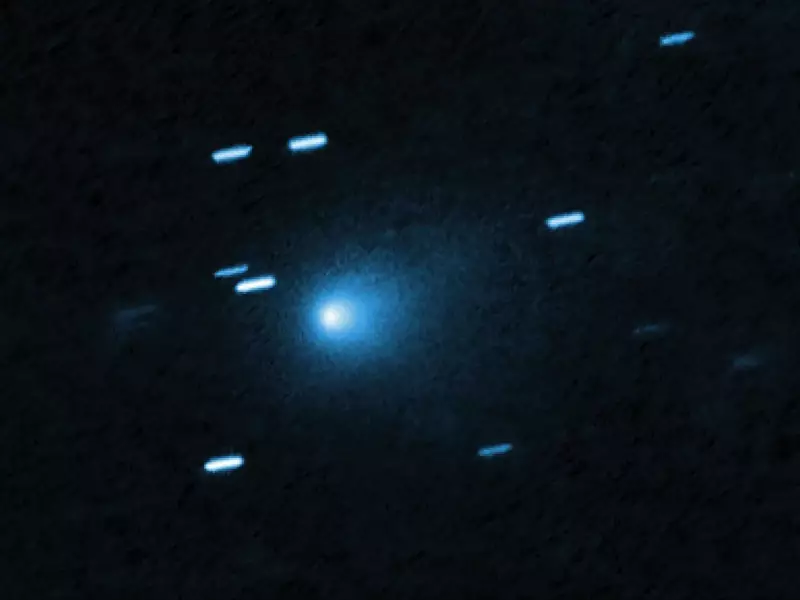
In a landmark discovery for astronomy, scientists have for the first time detected a radio signal from an interstellar visitor, the object known as 3I/ATLAS. This finding, achieved using South Africa's powerful MeerKAT radio telescope, definitively confirms that the mysterious traveller is a natural comet, conclusively ending speculation that it might be an alien spacecraft.
The Mysterious Visitor from Deep Space
3I/ATLAS was first observed in July 2025, becoming only the third interstellar object ever detected passing through our solar system. This icy body is travelling at an incredible speed of more than 130,000 miles per hour (210,000 km/h). Astronomers identified it as a body ejected from a distant star system billions of years ago.
The object initially puzzled scientists with its unusual characteristics, including strange brightness fluctuations, shifting colour, and odd orbital behaviour. These anomalies fuelled widespread speculation online, with some theorists, including Harvard astrophysicist Avi Loeb, suggesting it could be an artificial object or even an extraterrestrial probe, echoing earlier debates surrounding the first known interstellar visitor, 'Oumuamua, in 2017.
A Natural Signal Solves the Mystery
The scientific breakthrough occurred when the MeerKAT telescope array, with its 64 radio dishes, detected a faint but clear radio signal from 3I/ATLAS. This detection happened as the object made its closest approach to the Sun, known as perihelion, on October 29.
Contrary to the hopes of some, the signal was not a message from an alien civilization. Researchers quickly identified it as a natural radio emission produced by hydroxyl radicals (OH molecules) within the comet's coma—the cloud of gas and dust surrounding its icy core.
This emission is a classic signature of a process called outgassing. It occurs when solar radiation breaks apart water vapour that is being ejected from the comet, a process that also creates a comet's characteristic glowing tail. In essence, the radio waves are direct evidence of water and chemical activity, confirming that 3I/ATLAS behaves just like comets native to our own solar system.
Science Triumphs Over Speculation
This discovery provides overwhelming evidence that settles the debate about the object's true nature. The radio signal perfectly matches known patterns of natural comet activity and does not resemble anything artificial or engineered.
The finding strongly aligns with NASA's earlier observations from October, which detected powerful jets of water erupting from the comet “like a fire hose” as it neared the Sun. Together, these two independent discoveries confirm that 3I/ATLAS is an ancient, water-rich comet, likely formed up to seven billion years ago in the outer reaches of another star system before being flung into the vastness of interstellar space.
The detection method itself is a triumph of modern astronomy. Hydroxyl radicals are produced when ultraviolet light from the Sun interacts with and splits apart water molecules. These radicals then emit a distinct radio wavelength that powerful instruments like MeerKAT can detect, giving astronomers a reliable way to identify water activity and confirm an object's cometary nature.
As one researcher involved in the study stated, “The radio signature is exactly what we’d expect from a water-rich comet. It tells us that this object is behaving in a completely natural way—there’s nothing alien about it.”
A Message from the Universe
Beyond debunking alien theories, this discovery represents a significant leap forward for science. By studying interstellar objects like 3I/ATLAS, astronomers can trace the chemical composition of distant planetary systems. This offers invaluable insights into how water and organic molecules, the building blocks of life, form elsewhere in our galaxy.
With advancing technology from telescopes like MeerKAT and the upcoming Square Kilometre Array (SKA), scientists expect to detect many more such interstellar messengers in the coming years. Each one carries the chemical fingerprints of its birthplace across the cosmos.
As one astronomer eloquently put it, “3I/ATLAS didn’t send us an alien message—it sent us something better: a message from the universe itself about where we come from.”





